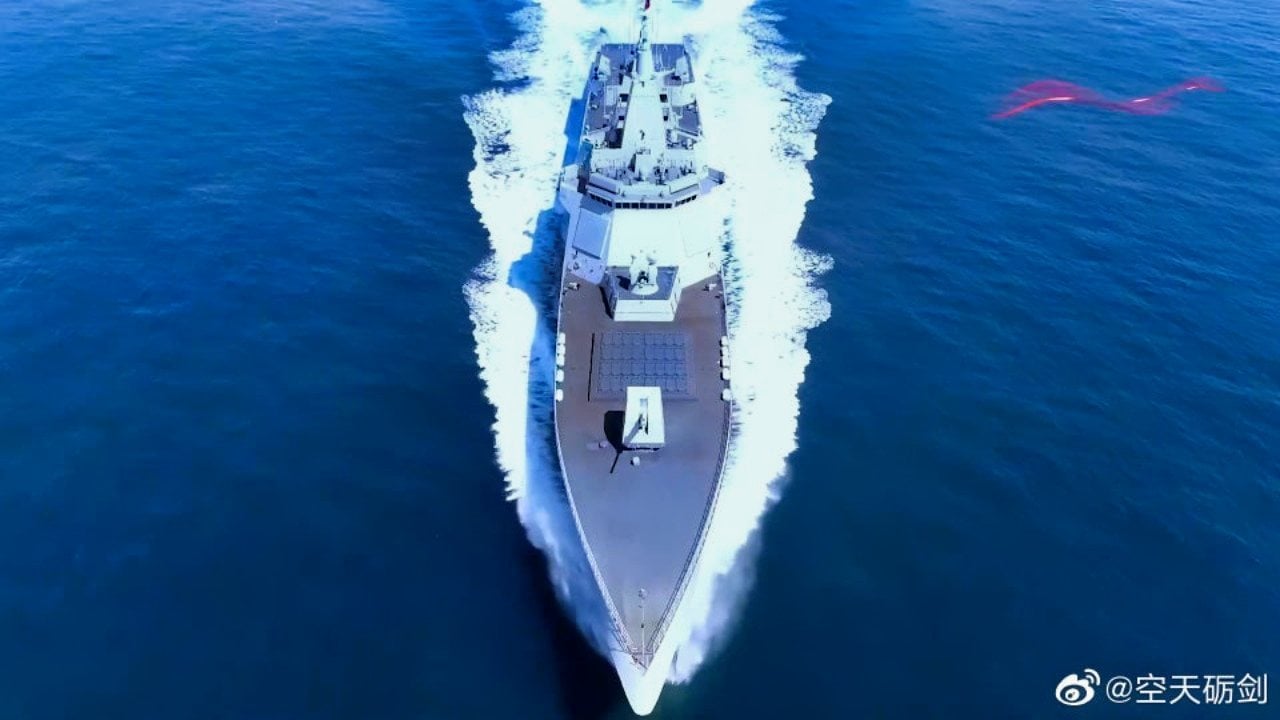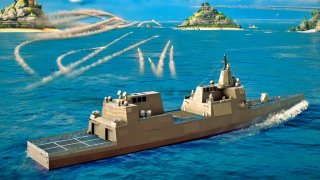China's Navy Is the Largest on Earth and Copying the U.S Navy's Power Blueprint
Beijing is essentially copying the U.S. Navy, investing heavily in aircraft carriers, guided-missile cruisers, guided-missile destroyers, amphibious assault ships, and submarines.
China presents the most serious threat to U.S. national security. U.S. defense and intelligence officials keep repeating this because of the great danger coming from Beijing.
The Chinese Communist Party has been spending a lot of money and resources in modernizing the Chinese military. The goal is clear. Establish regional dominance in the Indo-Pacific, control the South China Sea and its approaches, and unify with Taiwan, whether through diplomacy or war.
In the event of a conflict, the Indo-Pacific area of operations will essentially be a giant naval battlefield. As such, sea power would likely determine the course of a conflict. Working from this, let’s examine the state of the Chinese Navy.
China Now Has the Largest Navy in the World
The People’s Liberation Army Navy (PLAN) is the largest in the world, having outnumbered the U.S. Navy in recent years.
Here on The National Interest we have discussed previously about the growing capabilities of the Chinese Navy. In previous coverage, we went in depth about Beijing’s ambitious aircraft carrier goals. But now, we will cover the broader capabilities of the Chinese Navy.
As of early 2024, the Chinese Navy fields approximately 500 warships, as well as more than 230 auxiliary ships.
In terms of major surface combatants—the ships that would do most of the fighting in the event of a conflict—the Chinese Navy has 72 corvettes, 49 guided-missile destroyers, and 42 frigates.
When it comes to aircraft carriers, Beijing has two and is building a third one. It also has 11 amphibious assault ships that could carry aircraft and attack helicopters. However, these ships wouldn’t be able to double as light aircraft carriers effectively because the Chinese military doesn’t have a credible Short Take-off, Vertical Landing (STOVL) capability that allows fighter jets to take off and land like helicopters.
In terms of submarines, the Chinese Navy bolsters 45 attack submarines, nine nuclear attack submarines, and seven ballistic missile submarines for a total sub force of 61 vessels.

The Chinese Navy also has a robust amphibious landing vessel fleet with 72 vessels.
Beijing is essentially copying the U.S. Navy, investing heavily in aircraft carriers, guided-missile cruisers, guided-missile destroyers, amphibious assault ships, and submarines.
Not All is Lost for the U.S Navy
To be sure, we need to make an important clarification. Quantity doesn’t necessarily mean quality.
The Chinese Navy might bolster a larger fleet than the U.S., but that doesn’t make it better and more effective in combat operations.
America still maintains a qualitative advantage over its adversary, including better weapon systems, more advanced sensors, and a superior naval aviation capability. Moreover, operational experience and training are also important. For example, the U.S. Navy has been using its carrier battlegroups in operations for decades.
This has created institutional knowledge and expertise on carrier operations that would be invaluable in the event of a conflict.
In contrast, the Chinese Navy is still trying to piece together a credible aircraft carrier capability. Although the Chinese fleet is growing, it lacks the operational experience that turns large pieces of steel into effective war machines.
About the Author
Stavros Atlamazoglou is a seasoned defense and national security journalist specializing in special operations. A Hellenic Army veteran (national service with the 575th Marine Battalion and Army HQ), he holds a BA from the Johns Hopkins University, an MA from the Johns Hopkins’ School of Advanced International Studies (SAIS). He is pursuing a J.D. at Boston College Law School. His work has been featured in Business Insider, Sandboxx, and SOFREP.


